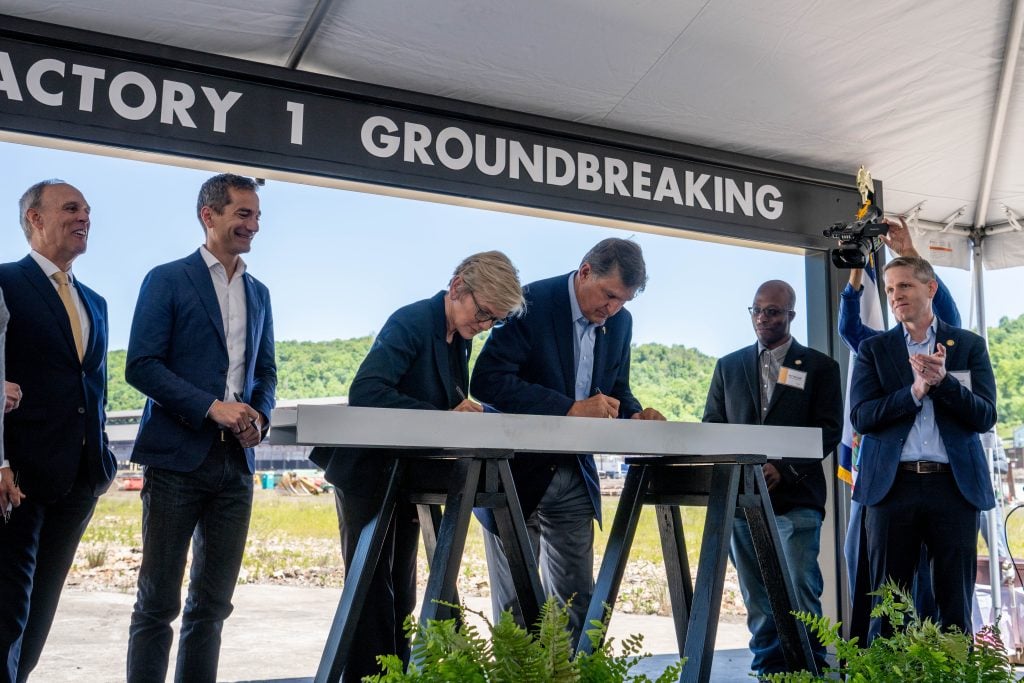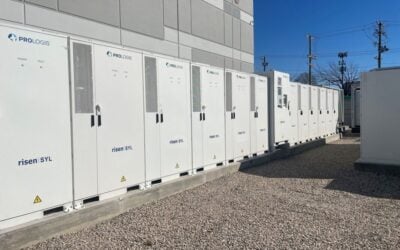
US utility company Dominion Energy has agreed to pilot the deployment of two novel non-lithium technologies designed for long-duration energy storage (LDES) applications.
Iron-air batteries from Form Energy and zinc hybrid cathode batteries from Eos Energy Enterprises – both of which are likely familiar names for readers of Energy-Storage.news – will be put through their paces by the utility.
Enjoy 12 months of exclusive analysis
- Regular insight and analysis of the industry’s biggest developments
- In-depth interviews with the industry’s leading figures
- Annual digital subscription to the PV Tech Power journal
- Discounts on Solar Media’s portfolio of events, in-person and virtual
They will be deployed in Virginia, where Dominion is building out a large-scale offshore wind project, as well as having existing solar PV assets that it claimed represent the second-biggest portfolio in the country – likely after NextEra, which has been the longtime leader in that respect.
At the same time, under state legislation to combat climate change and boost the clean energy economy, Dominion is among Virginia utilities ordered to contribute towards achieving a 3.1GW energy storage policy target by 2035.
Dominion filed its proposal for the project with the regulatory Virginia State Corporation Commission on Monday (18 September), the company said yesterday, describing the pilot as “groundbreaking”.
Both Form Energy and Eos’ storage systems are designed to perform longer duration applications than are typically seen done using lithium-ion battery energy storage system (BESS) assets.
Form Energy’s tech is designed as a “multi-day” storage resource capable of storing energy for discharge over durations of up to 100 hours. Meanwhile Eos’ battery stacks each hold up to 3-hours duration capability but can be connected together to provide long-duration energy storage of around 12 hours, with flexibility in either direction.
Dominion said the trial could “significantly increase the length of time batteries can discharge electricity to the grid,” while the potential non-lithium alternatives could also demonstrate enhanced safety profiles over lithium.
They will be located at the site of Dominion Energy’s existing 336MW natural gas Darbytown Power Station and called, helpfully, Darbytown Storage Pilot Project.
“We are making the grid increasingly clean in Virginia with historic investments in offshore wind and solar. With longer-duration batteries in the mix, this project could be a transformational step forward, helping us safely discharge stored energy when it is needed most by our customers,” Dominion Energy Virginia president Ed Baine said.
The long-duration energy storage project still requires approvals from both the Virginia SCC and local authorities for Henrico County, but construction is being planned to start in late 2024 or earlier, and go into operation towards the end of 2026.
‘Severe weather events point to need for LDES on grid’
With a handful of other utility pilots announced in other US states, first with Great River Energy in Minnesota, then with Xcel Energy in Minnesota and Colorada and Georgia Power in the South, this will be Form Energy’s first deployment in Virginia. Meanwhile Form is currently building its first factory nearby in West Virginia.
A source close to Form Energy told Energy-Storage.news that the pilot installation will be 100-hour duration, at 5MW output and therefore 500MWh storage capacity.
Form Energy CEO Mateo Jaramillo added in comments to the site that the Darbytown project is “innovative and timely,” and a good complement to Dominion’s growing portfolio of offshore wind and (onshore) solar.
“Many battery technologies on the market can only provide, at most, four to six hours of energy storage at full rated power. While this is adequate for many circumstances, recent severe weather events – ranging from heat waves to cold snaps to thousand-year rains – have hamstrung our electric grid,” Jaramillo said.
Form Energy’s data and modelling experts have in the past contributed a couple of interesting Guest Blogs on these topics, including a look at the devastating impact of Winter Storm Uri in Texas in 2021 and how a blend of short to multi-day energy storage could have mitigated it, while another focused on how storage can help California integrate renewable energy to the grid instead of wasting it.
Jaramillo also told Energy-Storage.news that the last few years, where much of the industry was characterised largely by supply chain challenges for lithium-ion showed an increasing reliance on “vulnerable supply chains”.
Turning to alternatives could enable decoupling from those supply chains, while Form Energy has claimed its batteries – which essentially rust and then de-rust iron to charge and discharge electricity – can also be around ten times cheaper to build than lithium BESS, if manufactured locally and to scale.
“To run the grid reliably and affordably, we need new energy storage technologies capable of cost-effectively storing electricity for multiple days, during extended periods of extreme weather, grid outages, or low renewable generation,” Jaramillo told Energy-Storage.news.
Meanwhile Eos’ portion will be 4MW/16MWh. Unlike Form Energy’s batteries, which are yet to be seen deployed in the field, Eos’ are already commercially available and the publicly listed company is targeting the construction of a US$500 million manufacturing hub – for which it has received a conditional loan offer worth 80% of the cost, from the US Department of Energy’s Loan Programs Office.
“We are proud to have been selected for this critical project. Eos was founded on the belief that renewable energy sources require long duration storage to fully maximise their contribution to the energy mix,” Eos chief customer officer Marshall Chapin said.
“Dominion Energy understands that challenge and also that meeting those needs requires multiple storage technologies.”
Specifically on Eos’ technology, Dominion’s Ed Baine said it could be safer than lithium-ion, with Eos’ latest Eos Z3 model zinc-hybrid batteries – which plate and replate zinc in the charge-discharge cycle – to be used. The company claimed that its technology runs at “minimal risk” of thermal runaway due to a water-based electrolyte and polymer framing which is flame retardant, while water vapour is the main component of outgassing, if the batteries are overcharged.
This article has been amended to reflect that Form Energy’s factory is under construction in West Virginia, and not Virginia, as was originally stated.






